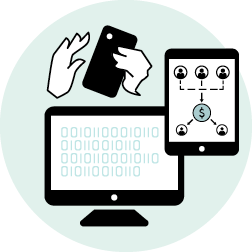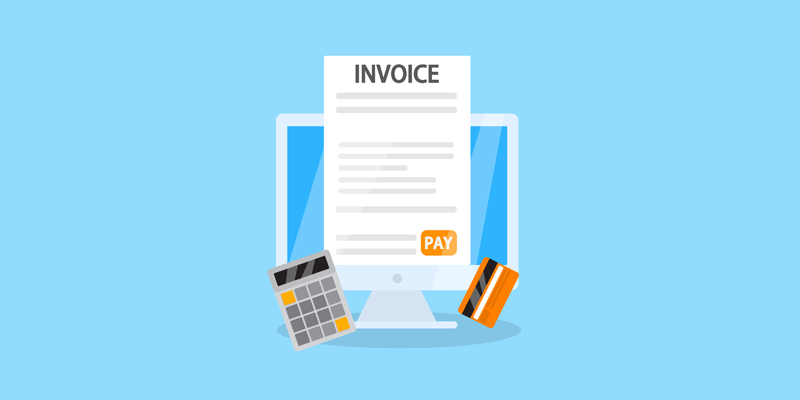Just as consumers have gone online in droves, racking up $861 billion in U.S. sales in 2020, so has B2B purchasing. 74% of B2B buyers research at least half of their work-related purchases online, and 30% complete at least half of their work-related purchases online, according to Forrester.
With the frequency of B2B online purchasing rising so rapidly, it is no surprise that B2B e-invoicing is following a similar path. Just like online purchasing, e-invoicing is easier, faster, and less expensive than the alternatives like manual invoices and paper checks. E-invoicing brings business billing and payments into the modern digital age.
An Idea Whose Time Has Come
Though the volume of commercial checks has dropped by half in the last decade, 3.7 billion checks still were collected in 2020, according to the Federal Reserve. 81% of businesses continue to use paper checks in some form, but only 40% are satisfied with them, according to a PYMNTS research report. So it’s not surprising that 46% of accounts payable professionals would like to implement e-invoice solutions.
Currently, most businesses have a choice about whether to adopt e-invoicing. But at some point, that might not be the case.
Governments around the world are exploring or already mandating that their vendors submit electronic invoices. This includes the U.S. federal government, which, with an annual spend of $550 billion, is the largest purchaser of goods and services in the world. It began requiring e-invoicing on government platforms in 2018.
As for B2B e-invoicing, some countries made it mandatory years ago. Others have passed laws to require it in the near future or are exploring legislation to do so. And e-invoicing is a growing market in several large countries, including China and Australia.
Generally speaking, the adoption of e-invoicing is accelerating as more countries around the world accept it as a best practice and, in some cases, a mandatory standard. Situations like the pandemic will surely accelerate that. While change might be forced at some point, why wait for it? E-invoicing offers many advantages that businesses can take advantage of today.
Save Time, Reduce Costs, Get Paid Faster
Shifting to e-invoicing can help an organization:
- Reduce payment errors (and headaches). Manual data input can produce mistakes (and payment disputes) that e-invoicing that includes a self-pay option for customers, can eliminate – and e-invoices don’t get lost in snail mail, either.
- Save time. E-Invoices are much easier to send immediately, requiring significantly less prep time than traditional invoices. And handling paper checks takes time, as does manually entering payment data. Enabling customers to self-pay online is quick, convenient, efficient and more secure.
- Reduce costs. Anything that saves time can reduce costs. Those who implement e-invoicing typically see a 60% to 80% cost savings, according to Billentis. Customer costs can be reduced, too. For example, the process of issuing, sending and reconciling checks costs time, resources, and hard dollars: about $4 to $20 per transaction.
- Offer better customer service. E-invoicing streamlines the payment process for your customers. They can click a link in an email or invoice, open a secure payment page, and immediately input payment. Plus some e-invoice providers, like MerchantE, offer options to send invoices via text and allow customers to pay via text. One more way you give people choices to select a preferred and most convenient means to pay sooner.
- Eliminate missed payments. You can offer subscription and auto-pay options to clients through e-invoices. You also can send automated reminders via email and text.
- Get paid faster. In the U.S., an estimated $3 trillion is tied up in outstanding accounts receivable at any given time, a Fundbox study By making payment easier, you can reduce your days sales outstanding and receive your money sooner.
- Manage cash flow more effectively. If you use e-invoicing software with an analytics dashboard, you’ll have insight into the status of invoices – when they’ve been sent, viewed, and paid, and which invoices might be aging. Extracting insights via analytics helps you make more informed business decisions and operational improvements that fuel growth. As your cash flow becomes more predictable, you’re better equipped to navigate and pivot your strategy with ease.
And one final benefit that isn’t strictly financial in nature, and might be somewhat unexpected, but can offer companies another advantage: Moving to more a modern, electronic accounts receivable process improves employee efficiency and job satisfaction, which fosters a positive company culture that can help in recruiting new talent. Randstad, an employment and recruitment company, conducted a study showing that technology plays a significant role in a candidate’s decision to work for an organization.
Embracing the opportunities of digital B2B invoicing can provide major advantages to organizations of all sizes and industries. With so many digital tools at their disposal, your customers and employees have come to rely on them to streamline their daily personal lives. They expect the same seamless and easy experience in their business lives. If you aren’t already sending e-invoices to your clients, and offering electronic payment methods, you may be falling short of their expectations – and your competitors may be passing you by.
Ready to streamline your invoicing process and get paid faster? Find out how our e-invoicing solution, MerchantE Invoice, can help!




